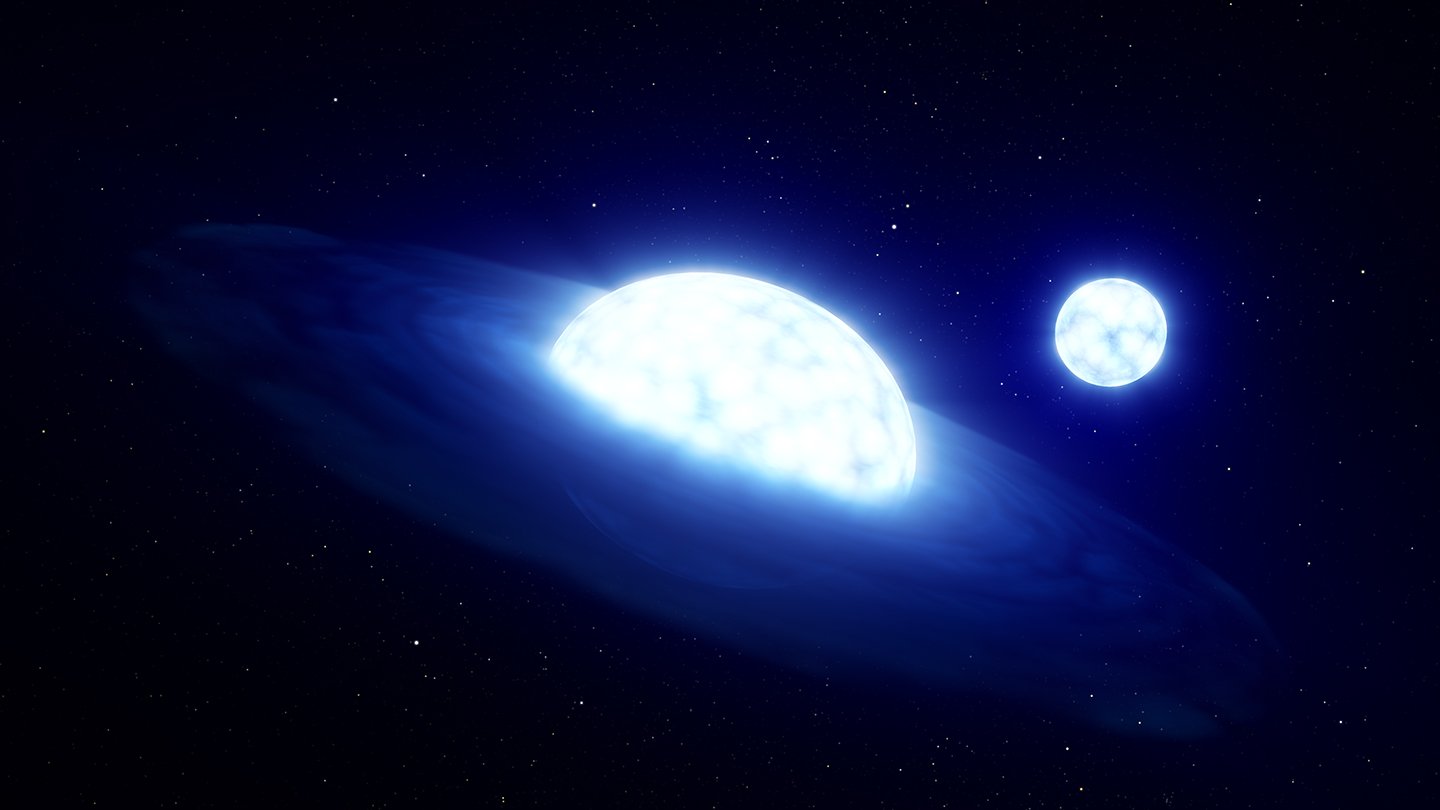The closest black gap to Earth isn’t a black gap in any respect. As a substitute, what scientists thought was a stellar triplet — two stars and a black gap — is definitely a pair of stars caught in a novel stage of evolution.
In Could 2020, a workforce of astronomers reported that the star system HR 6819 was in all probability made up of a vibrant, large star locked in a good, 40-day orbit with a nonfeeding, invisible black gap plus a second star orbiting farther away. At about 1,000 light-years from Earth, that might make this black gap the closest to us (SN: 5/6/20). However over the next months, different groups analyzed the identical information and got here to a unique conclusion: The system hosts solely two stars and no black gap.
Now, the unique workforce and one of many follow-up groups have joined forces and checked out HR 6819 with extra highly effective telescopes that accumulate a unique kind of knowledge. The brand new information could make out finer particulars on the sky, permitting the astronomers to definitively see what number of objects are within the system and what kind of objects they’re, the groups report within the March Astronomy & Astrophysics.
Signal Up For the Newest from Science Information
Headlines and summaries of the newest Science Information articles, delivered to your inbox
Thanks for signing up!
There was an issue signing you up.
“Finally, it was the binary system that greatest explains every little thing,” says astronomer Abigail Frost of KU Leuven in Belgium.
Earlier observations of HR 6819 confirmed it as a unit, so astronomers couldn’t differentiate the objects within the system nor their plenty. To nail down HR 6819’s true nature, Frost and colleagues turned to the Very Giant Telescope Array, a community of 4 interconnected telescopes in Chile that may primarily see the separate stars.
“It allowed us to disentangle that authentic sign definitively, which is admittedly essential to find out what number of stars had been in it, and whether or not one in all them was a black gap,” Frost says.
The scientists assume one of many stars is a large vibrant blue star that has been siphoning materials from its companion star’s bloated ambiance. That companion star now has little gaseous ambiance left. “It’s already gone by means of its foremost life, however as a result of the surface has been stripped off, and also you solely see the uncovered core, it has related temperature and luminosity and radius to a younger star,” says Kareem El-Badry, an astrophysicist on the Harvard-Smithsonian Heart for Astrophysics in Cambridge, Mass. El-Badry was not concerned within the new examine, however he steered in 2021 that HR 6819 is a binary system.
This siphoned star’s core colour and brightness might idiot astronomers trying on the older information into considering it was a younger star with 10 instances as a lot mass. It initially appeared as if this star was orbiting one thing large however invisible — a black gap.
As soon as the researchers unraveled the system’s particulars, they realized this technique is a novel one, exhibiting astronomers a part not seen earlier than amongst programs with large stars. “It’s a lacking hyperlink in binary star evolution,” says astrophysicist Maxwell Moe of the College of Arizona in Tucson, who was additionally not a part of the brand new examine.
Astronomers for years have seen binary programs the place one star is actively pulling gasoline off the opposite, they usually’ve seen programs the place the donor star is only a bare stellar core. However in HR 6819, the donor star has stopped giving mass to the opposite. “It nonetheless has a bit little bit of envelope left however is shortly contracting, evolving to turn into a remnant core,” Moe says.
Frost and her colleagues are utilizing the Very Giant Telescope Array to observe HR 6819 over a 12 months to trace exactly how the celebrities are shifting. “We need to actually perceive how the person stars within the system are ticking,” she says. The workforce will then use that info in laptop simulations of binary star evolution. “[It’s] thrilling to now have a system that we are able to use as form of a cornerstone to research this in additional element,” Frost says.
Despite the fact that HR 6819 doesn’t have the closest black gap to Earth, it seems to have one thing extra helpful to astronomers.



